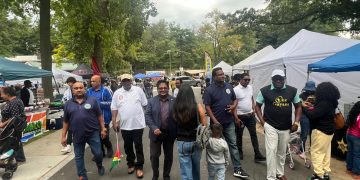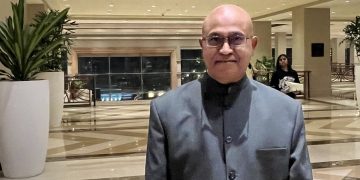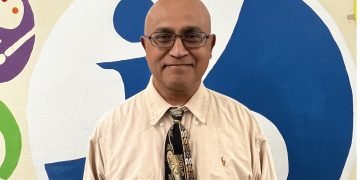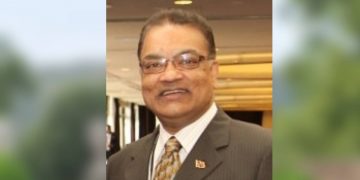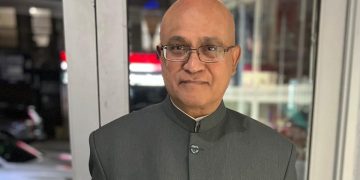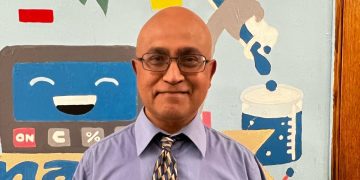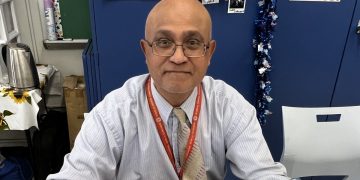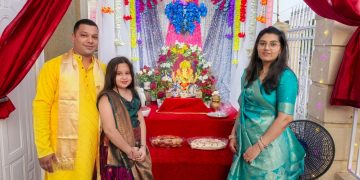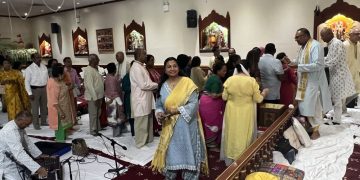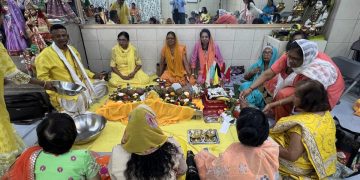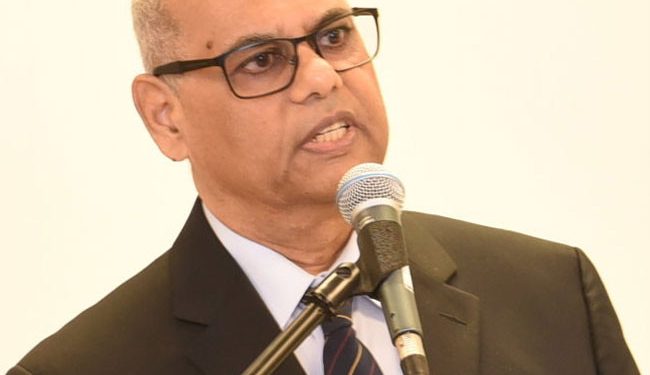By Stabroek News On February 22, 2023 @ 2:07 am In Letters to the Editor |
Dear Editor,
Guyana has often been described as a “Land of Six Races”. In my view, in this multiracial environment with its consequential stresses and strains as ethnic groups compete for resources, an appreciation of the history and contribution of each group is essential to promote understanding, peace and harmony as Guyanese strive to achieve the national motto of “One People, One Nation, One Destiny”. Thus, Black History Month in February provides an opportunity for all Guyanese to learn about the history and culture of Afro-Guyanese, and their contributions to the society since the early seventeenth century when the Dutch West India Company commenced importing slaves from Africa to work initially on tobacco and later sugar plantations.
In this piece I write to bring attention to the contributions of three outstanding Afro-Guyanese of Eastern Mahaicony, the area in Guyana where I was born and where I grew-up as a child in the 1950s. These individuals have long passed on but the contribution of each to the citizens of that part of Guyana must be recognized and recorded.
Eastern Mahaicony covers the villages from the Abary River in the East to the Mahaicony River in the West. I was born in the village of Huntley Mahaicony, about ten houses east of where former Prime Minister, President, and now Ambassador to Washington, Mr Sam Hinds and his siblings lived with their grandparents, Mr and Mrs Bruce. I believe Mr Hinds is one of the most outstanding citizens not only of Eastern Mahaicony but of the entire country but his story is reserved for another time. My focus is on individuals who are now in the great beyond and one of those is his grandmother.
My dad was born in Huntley in 1920 and passed away in 2015. In the 1920s he attended the Novar Canadian Mission School, a primary school funded and managed by the Canadian Mission (CM), the overseas arm of the Canadian Presbyterian Church. The CM focused on the education of East Indian children, mainly Hindus and to a lesser Muslims, with the aim of gaining converts to Christianity. This body had experience in India and its Canadian Head in Guyana, Reverend James Cropper, spoke Hindi fluently, enabling him to converse with and persuade East Indian parents to send their children to school. According to my dad, one of his early class teachers was an Afro-Guyanese, Miss Drayton, who came from a village in Mahaica. She immediately won over parents when they found out that she taught the children to sing the bhajan (the equivalent of a hymn) – Hey Prabhu Ananda Daata Gyaana Hamko Deejiye (O Lord, Giver of Bliss, Give Me Knowledge). Later, Miss Drayton would marry Mr Bruce, Pastor of the AME Zion Church, becoming Mrs Bruce. Over the years she gained promotions and finally held the position of Deputy Headmistress of the school. She was an integral part of the community, was highly regarded and well respected. Prior to writing this piece, I spoke on the telephone with now Ambassador to Washington, Mr Hinds, and he added that his grandmother was able to read and write Hindi (Devnagari script) very well but could not translate the language.
Incidentally, the original CM school was replaced by a new building in the early 1950s in a different location but continued as Novar CM School until 1961 when the name was changed to Novar Government School as a result of the PPP government’s initiative spearheaded by Mr Balram Singh Rai, then Minister of Education, ending the system of “dual control of schools”. In speaking with Ambassador Hinds he reminded me that he attended the Novar CM School from 1948 to 1955 when he left to attend secondary school in Georgetown. He and his siblings were among the few children of African background to attend the school during that period.
Another individual on my list is Mr William A Seaforth who was the Headmaster of Novar CM School during my dad’s years of attendance and when Miss Drayton joined the staff. Prior to his appointment at Novar CM, he was a teacher at the DeHoop Canadian Mission School. After Novar CM, he was transferred to the Berbice region where he remained until his retirement in the 1940s and then returned to Eastern Mahaicony where he ran his own private school under the name Dundee Private School until around 1960 when failing eye sight caused him to close the school.
After his return to Eastern Mahaicony, Mr Seaforth and his wife Gertrude lived in Huntley, a few houses away from where I was born. She was a quiet, dignified lady who stayed at home. He on the other hand was outgoing and very popular throughout the district. He was also the lay preacher on Sundays in a Christian church in the nearby village of Airy Hall. Gertrude and my paternal great-grandmother were very good friends and I basically grew up in her presence. When I was ready for primary school in 1952, my great-grandmother was adamant that I should attend Mr Seaforth’s school where the monthly fee was two shillings (forty-eight cents) per month, instead of the Novar CM school where education was free. The key reason for her insistence was because, in her opinion, the teachers at Novar CM were not “proper teachers, they don’t wear suit and tie like teacher Seaforth”. And she paid my fees for the entire duration of my years at Dundee Private School, i.e. from 1952 to 1958. In chatting with Mr Hinds, he reminded me that Novar CM was perceived as an ‘Indian’ school while Dundee Private was perceived as a ‘Black’ school and joked “so you attended the Black school while I attended the Indian school”.
Dundee Private school was a one-room schoolhouse and Mr Seaforth taught all the classes from Standard 1 to 6 with an Assistant who helped with the Beginners (ABC class). He was an outstanding organizer who was able to manage and teach all the classes, a strict disciplinarian who resorted to the strap for school work and discipline, and most of all an excellent teacher. I left the village for secondary school but returned every year during the August holidays and would always pay him and his wife a visit, even after he lost his sight completely. He relished those occasions, would treat me with respect, and would fill me in on his boyhood years growing up in Buxton. When I spoke to Eusi Kwayana about two decades ago, he admitted he was not aware of William Seaforth but promised to do some checking. About a year later he called to say that after he was able to speak with Kwame Apata (formerly Eardley Seaforth), the latter confirmed that William was a senior member of the Buxton Seaforth clan who had moved away from the village many, many decades ago.
Last but not least on my list is an exceptional human being who was popularly known as Nurse Joyce and who lived in Dundee village. I do not know when she was appointed Nurse-Midwife for the district but I was told that she took care of the delivery when I was born in the late 1940s, so I guess her appointment predates my birth. And I believe she continued in that role until around 1960. This was a time when expectant mothers had no access to prenatal care in the district and only a Government Officer (doctor) was stationed in Central Mahaicony with no hospital facility. All child-births took place at home, were all handled by the Nurse-Midwife, and only exceptionally complicated cases were rushed to the Georgetown Public Hospital (GPH) while a woman was already in labour. Worse yet, there were no hire cars (taxis) for transportation and less than five private cars in Eastern Mahaicony that could be hired to transport a person to the GPH. Incredibly, during my childhood years, I can only recall hearing of two cases where an expecting mother had to be rushed to the GPH and in both cases, each mother and her child died in the hospital. It was well known that night or day, rainfall or sunshine, soon after Nurse Joyce received a call, she would arrive to help an expectant mother deliver her baby. She was an extremely competent and caring person, and a blessing to the generations of women and their babies to whom she attended.
Yours faithfully,
Harry Hergash













